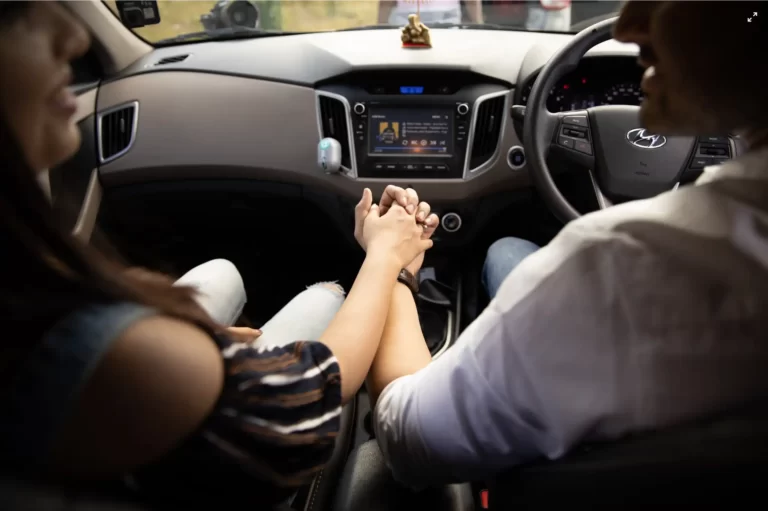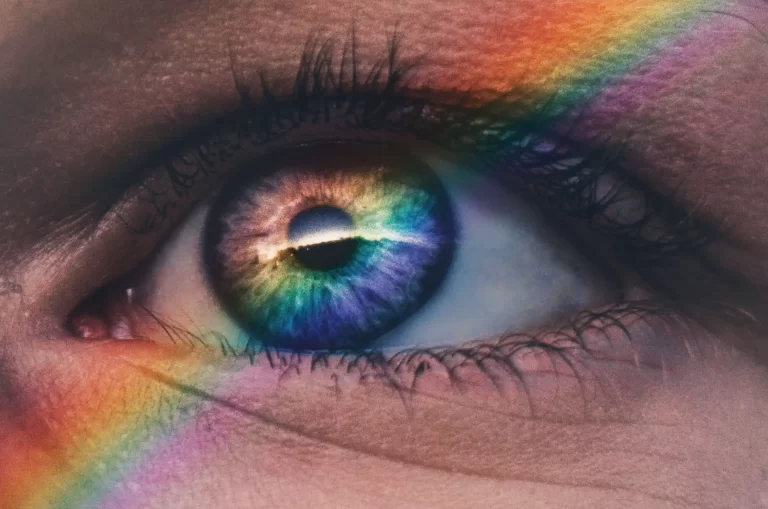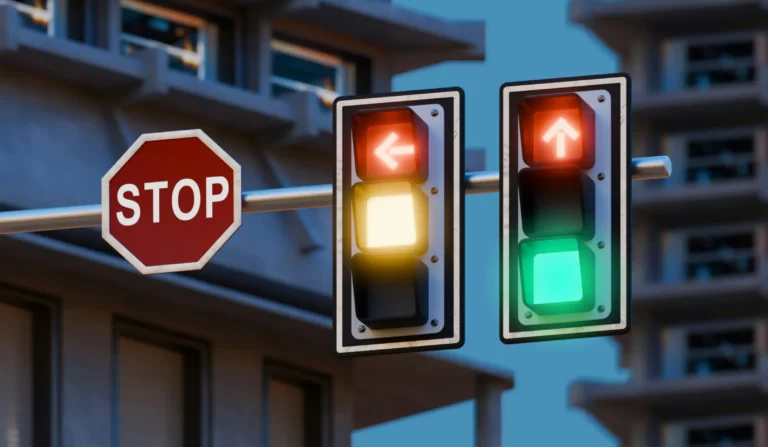Can Pilots Be Colorblind: Examining Vision Requirements in Aviation
Can pilots be colorblind? it’s possible for some colorblind individuals to become pilots, there are strict rules and tests in place to ensure flight safety. The Federal Aviation Administration (FAA) has specific guidelines for color vision in aviation.

Pilots need to identify different colored lights and signals quickly and accurately. This skill is crucial for safe flying, especially at night or in bad weather. The FAA uses various tests to check a pilot’s color vision. These tests help determine if a person can see the colors needed for flying.
Some colorblind people can still become pilots. The FAA has made changes to allow more options for those with color vision issues. There are now different ways to prove color vision ability. This means that even if someone fails the first test, they might still have a chance to fly.
Key Takeaways
- Some colorblind individuals can become pilots with FAA approval
- Color vision tests are required to ensure flight safety
- There are multiple options for proving color vision ability in aviation
Understanding Color Vision in Aviation
Color vision plays a crucial role in aviation safety and pilot performance. It affects how pilots interpret visual signals and navigate aircraft effectively.
Color Perception and Pilot Responsibilities
Pilots rely on color perception for various tasks. They need to identify runway lights, read cockpit instruments, and interpret navigation charts.
Color vision helps pilots spot other aircraft and obstacles. It’s also key for recognizing weather patterns on radar displays.
During night flights, pilots must distinguish between different colored lights. These include airport beacons, runway edge lights, and aircraft position lights.
Color Vision Deficiency Explained
Color vision deficiency, often called color blindness, affects how people see colors. It’s caused by issues with cone cells in the retina.
There are four main types:

1. Red-Green Color Blindness
This is the most common form of color blindness and affects both men and women, but it is more prevalent in men. It involves difficulty distinguishing between red and green hues.
- Protanomaly: Reduced sensitivity to red light. People with this condition may have trouble distinguishing between red and green, and reds may appear duller.
- Deuteranomaly: Reduced sensitivity to green light. This is the most common form of red-green color blindness. People may confuse green with brown and red with green.
- Protanopia: A complete inability to perceive red light. Red appears dark, and the person may have difficulty distinguishing between blue and purple.
- Deuteranopia: A complete inability to perceive green light. Green may appear beige or brownish, and it’s difficult to differentiate between green and red.
2. Blue-Yellow Color Blindness
This is rarer than red-green color blindness and typically affects both men and women equally.
- Tritanomaly: Reduced sensitivity to blue light. People with this condition may have difficulty distinguishing between blue and green, or between yellow and violet.
- Tritanopia: A complete inability to perceive blue light. Blue may appear greenish, and yellow might appear as a shade of red or pink.
3. Total Color Blindness (Monochromacy)
In total color blindness, the person is unable to perceive any color at all and can only see shades of gray.
- Rod Monochromacy (Achromatopsia): A rare and severe form of color blindness where the individual has no functioning cones (the cells responsible for color vision) in their eyes. They see everything in grayscale and may also experience poor vision, light sensitivity, and nystagmus (involuntary eye movement).
- Cone Monochromacy: Even though the individual has some functioning cones, the other cones are nonfunctional, meaning they can only perceive one color, resulting in a very limited color range, usually in shades of gray.
4. Complete Color Blindness (Achromatopsia)
This is a very rare condition where the person sees no color at all. They perceive the world only in shades of gray, black, and white, making all colors indistinguishable.
Most color blind people can see some colors, but have trouble telling certain shades apart.
How Many Colorblind Pilot in US
Estimation of Registered Colorblind Pilots (1990–2024):
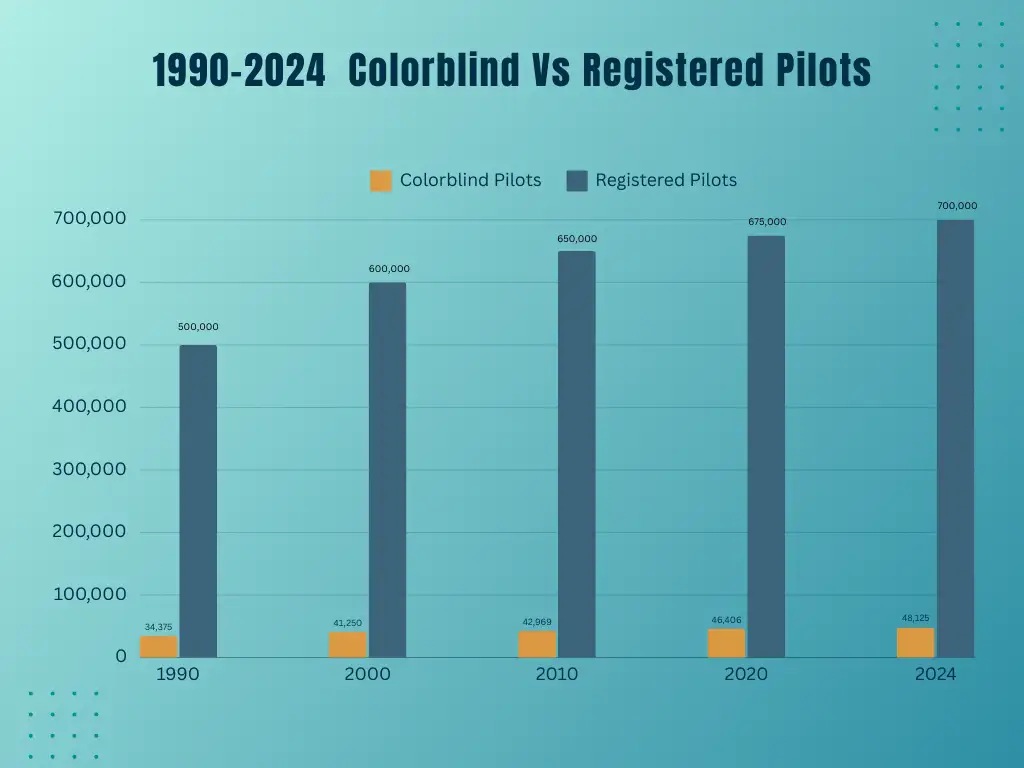
- 1990:
- Total registered pilots: ~500,000
- Estimated male pilots: 85% of 500,000 ≈ 425,000
- 8% of 425,000 men = 34,000 male pilots with red-green color blindness.
- Estimated female pilots: 15% of 500,000 ≈ 75,000
- 0.5% of 75,000 women = 375 female pilots with red-green color blindness.
- 2000:
- Total registered pilots: ~600,000
- Estimated male pilots: 85% of 600,000 ≈ 510,000
- 8% of 510,000 men = 40,800 male pilots with red-green color blindness.
- Estimated female pilots: 15% of 600,000 ≈ 90,000
- 0.5% of 90,000 women = 450 female pilots with red-green color blindness.
- 2010:
- Total registered pilots: ~600,000–650,000
- Estimated male pilots: 85% of 625,000 ≈ 531,250
- 8% of 531,250 men = 42,500 male pilots with red-green color blindness.
- Estimated female pilots: 15% of 625,000 ≈ 93,750
- 0.5% of 93,750 women = 469 female pilots with red-green color blindness.
- 2020:
- Total registered pilots: ~675,000
- Estimated male pilots: 85% of 675,000 ≈ 573,750
- 8% of 573,750 men = 45,900 male pilots with red-green color blindness.
- Estimated female pilots: 15% of 675,000 ≈ 101,250
- 0.5% of 101,250 women = 506 female pilots with red-green color blindness.
- 2024 (Estimated):
- Total registered pilots: ~700,000
- Estimated male pilots: 85% of 700,000 ≈ 595,000
- 8% of 595,000 men = 47,600 male pilots with red-green color blindness.
- Estimated female pilots: 15% of 700,000 ≈ 105,000
- 0.5% of 105,000 women = 525 female pilots with red-green color blindness.
Summary of Estimated Registered Colorblind Pilots in the U.S. (1990–2024):
- 1990: ~34,375 colorblind pilots
- 2000: ~41,250 colorblind pilots
- 2010: ~42,969 colorblind pilots
- 2020: ~46,406 colorblind pilots
- 2024 (Estimate): ~48,125 colorblind pilots
Data Sources:
- FAA Pilot Statistics: Federal Aviation Administration provides detailed reports on the number of registered pilots in the U.S.
- FAA Official Site: https://www.faa.gov/data_research
- FAA General Aviation Statistics: https://www.faa.gov/data_research/aviation_data_statistics
- Prevalence of Color Blindness: The National Eye Institute and American Optometric Association provide the rates of color blindness in the general population.
- NEI: https://www.nei.nih.gov
- AOA: https://www.aoa.org
These figures are estimates based on available data, and the exact number of colorblind pilots may vary due to changes in pilot licensing trends and advancements in medical certification requirements.
Impact of Color Blindness on Piloting
Color blindness can affect a pilot’s ability to perform certain tasks. It may make it harder to read some cockpit displays or spot visual warnings.
The Federal Aviation Administration (FAA) has specific rules for color blind pilots. They must pass alternative tests to prove they can safely operate aircraft.

Some color blind individuals can still become pilots. It depends on the severity of their condition and their ability to compensate.
Aviation authorities may place restrictions on color blind pilots. For example, they might only be allowed to fly during the day.
The FAA and Medical Certification
The Federal Aviation Administration (FAA) has strict rules about pilot medical certification. These rules cover color vision, the types of medical certificates pilots need, and the role of Aviation Medical Examiners.
FAA Regulations on Color Vision
The FAA requires pilots to have good color vision. This is crucial for flight safety. Pilots must be able to see colors needed for airman duties. They need to recognize colored lights and signals in the air and on the ground.
During a medical exam, doctors test color vision using special plates. If a pilot fails this test, they may still get a certificate with limits. For example, they might not be allowed to fly at night.
The FAA does not accept color-correcting lenses as a fix for color blindness.
Medical Certificate Requirements for Pilots
Pilots need different types of medical certificates based on their flying duties. The FAA outlines these in FAR Part 67.
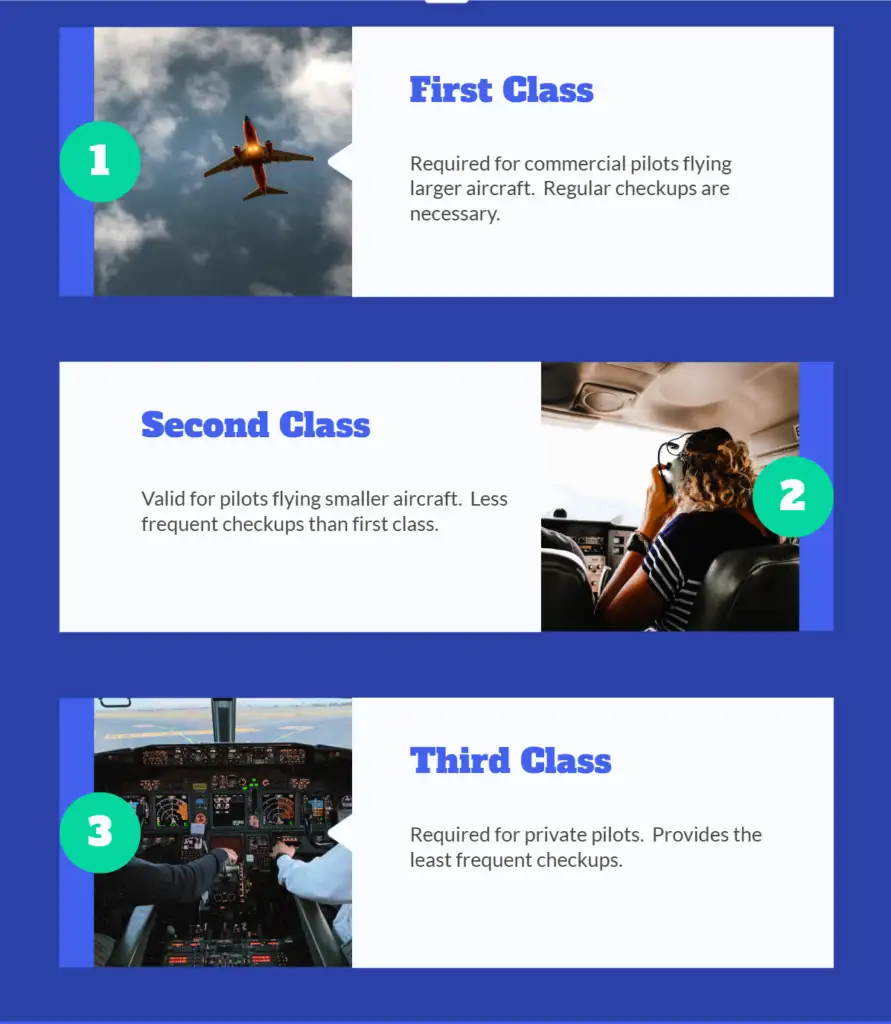
- First-Class: For airline transport pilots
- Second-Class: For commercial pilots
- Third-Class: For private pilots
Each class has its own health standards. Color vision is part of all three. Commercial pilots must have a Second Class Medical Certificate. Private pilots can fly with a Third Class certificate.
If a pilot fails the color vision test, they might only qualify for a lower class certificate. This can limit their flying options.
Aviation Medical Examiner’s Role
Aviation Medical Examiners (AMEs) play a key part in pilot certification. They perform medical exams and issue certificates.
AMEs check many aspects of a pilot’s health, including color vision. They use standard color vision testing methods. If a pilot fails the first test, the AME can offer other options.
AMEs can:
- Give alternate color vision tests
- Help schedule further testing
- Issue certificates with restrictions if needed
They must follow FAA guidelines when making decisions. AMEs can’t use certain tools, like X-Chrom lenses, to correct color vision issues.
Assessing Color Vision for Pilots
Pilots must pass color vision tests to ensure they can safely perform their duties. These tests check a pilot’s ability to see colors needed for flying. The FAA uses different methods to assess color vision in pilots.
Standard Color Vision Tests
The Ishihara test is the most common color vision test. It uses plates with colored dots forming numbers or shapes. Pilots must identify these correctly. Other tests include:
• Dvorine Second Edition 15-Plate Test • Pseudoisochromatic Color Plate Test • Farnsworth Lantern Test
These tests check for red-green color deficiencies. They are quick and easy to administer. An optometrist or ophthalmologist usually gives these tests during a medical exam.
Alternative Color Vision Testing Methods
Some pilots who fail standard tests may still qualify through alternative methods. The FAA allows other options for assessing color vision. These include:
• Alternative Color Plate Tests • Operational Color Vision Test (OCVT) • Medical Flight Test (MFT)
These tests are more detailed. They focus on a pilot’s ability to perform color-related tasks in real flying conditions. Pilots who pass these may receive a Letter of Evidence (LOE) allowing them to fly.
Operational Color Vision Testing
The OCVT and MFT are hands-on tests for pilots. They check if a pilot can:
• Read colored charts and maps • Identify airport beacons and runway lights • Recognize aircraft position lights
The signal light test is part of these assessments. It checks if pilots can see red, green, and white light signals from the control tower. These tests aim to ensure pilots can safely use color cues while flying.
Provisions for Colorblind Pilots
The aviation industry has made strides in accommodating colorblind pilots. There are now several options for those with color vision deficiency to pursue their flying dreams.
Adjustments and Accommodations
Pilots with color vision deficiency (CVD) can still fly with certain adjustments. The Federal Aviation Administration (FAA) has updated its standards to be more inclusive. These changes allow many colorblind pilots to obtain medical certificates.
Some accommodations include:
- Special cockpit lighting
- Enhanced instrument displays
- Modified color-coding systems
These changes help pilots with CVD navigate and interpret crucial information safely.
Letter of Evidence and Its Significance
A Letter of Evidence (LOE) is a key document for colorblind pilots. It proves a pilot’s ability to perform color-related tasks safely. To get an LOE, pilots must pass specific color vision tests.
The process involves:
- Taking FAA-approved color vision tests
- Demonstrating practical color identification skills
- Completing a Medical Flight Test (MFT) if needed
An LOE can open doors for pilots with CVD, allowing them to pursue various aviation careers.
Statement of Demonstrated Ability (SODA)
A Statement of Demonstrated Ability (SODA) is another important provision for colorblind pilots. It’s issued when a pilot proves they can perform safely despite their color vision limitations.
To obtain a SODA, pilots must:
- Pass specific practical tests
- Show proficiency in identifying aviation light gun signals
- Demonstrate safe navigation abilities
A SODA allows pilots with CVD to fly with certain restrictions. It’s a valuable tool that helps many colorblind individuals achieve their flying goals.
Operational Implications and Safety
Color vision plays a crucial role in aviation safety and operations. Pilots must accurately interpret visual cues and signals to navigate, communicate, and make critical decisions during flights.
Aeronautical Chart Interpretation
Aeronautical charts use colors to convey important information. Pilots need to distinguish between different shades to identify:
• Terrain elevation • Airspace classifications • Restricted areas • Flight routes
Color-blind pilots may struggle to interpret these charts accurately. This could lead to navigation errors or airspace violations.
Some charts use patterns and symbols along with colors. This helps pilots with color vision deficiencies. But it’s not a perfect solution.
Pilots must be able to quickly read and understand charts during flight. Any delay or misinterpretation could impact safety.
Airport Lighting and Signal Recognition
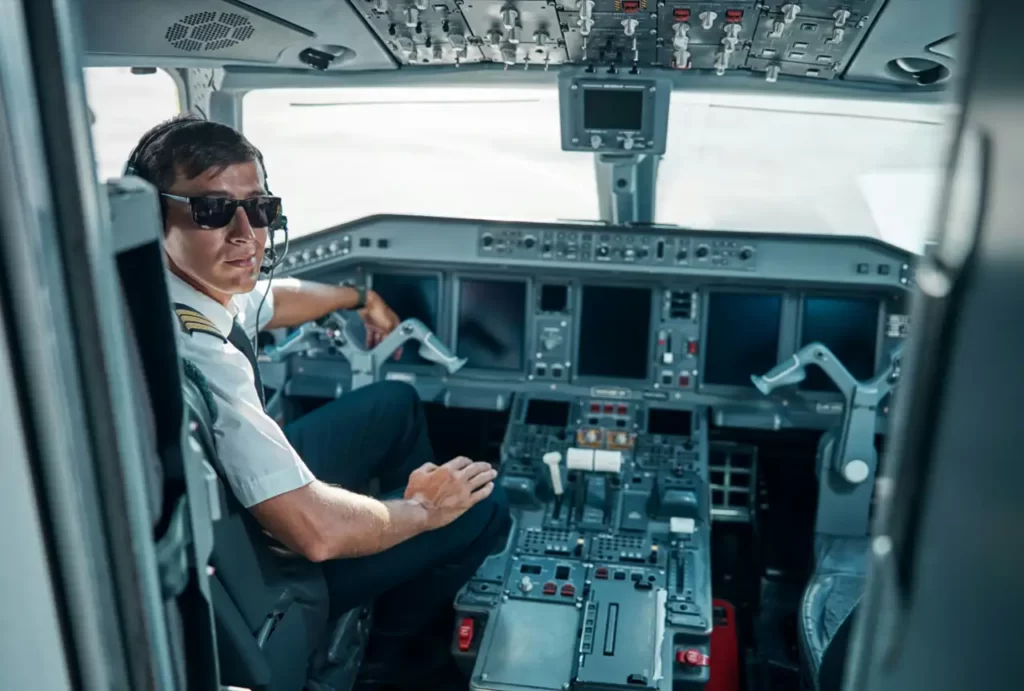
Airport lights and beacons are critical for safe takeoffs and landings. Pilots need to identify:
• Runway edge lights • Approach lighting systems • Precision Approach Path Indicator (PAPI) lights • Airport beacons
These lights use specific colors to convey information. For example, PAPI lights show red and white to indicate glide slope.
Color-blind pilots might have trouble distinguishing these lights. This could lead to incorrect landing approaches or runway misidentification.
Some airports use backup systems like Pulse Light Approach Slope Indicators. These help pilots with color vision issues.
Communication Signals and Ground Control
Visual signals are important for communication on the ground and in emergencies. Pilots must recognize:
• Light gun signals from control towers • Taxiway lights and markings • Emergency vehicle lights
Air traffic control towers use light guns to communicate when radio fails. These signals use different colors for various instructions.
Color-blind pilots might misinterpret these signals. This could lead to confusion or safety issues during ground operations.
Some airports have implemented enhanced markings and lighting systems. These help all pilots, including those with color vision deficiencies.
Navigating an Aviation Career with Color Vision Deficiency
Color vision deficiency can impact a pilot’s career options. There are still paths forward for those with this condition, but they come with some challenges.
Career Paths and Restrictions
Colorblind individuals can become pilots, but they face certain limits. The Federal Aviation Administration (FAA) has rules about color vision for pilots. These rules affect getting a pilot’s license.
Some career options include:
- Private pilot
- Commercial pilot (with restrictions)
- Flight instructor
Military pilot roles are usually not open to those with color blindness. Airline pilot jobs may be harder to get. The FAA does special tests for color vision. Passing these can open up more job choices.
Challenges and Considerations for Colorblind Aspirants
Aspiring pilots with color vision issues face unique hurdles. They must adapt to cockpit displays and navigation lights. Night flying can be extra tough.
Key points to think about:
- Extra training may be needed
- Some jobs may not be available
- Safety is always the top priority
Special exams can help prove a pilot’s abilities. These tests check if a person can do pilot tasks safely. Passing them can lead to fewer job limits.
Technology is helping. New cockpit designs use shapes and patterns, not just colors. This makes flying easier for colorblind pilots.
Regulation and Future Prospects
The FAA has updated its rules on color vision for pilots. New tests and tools may help more color-blind people become pilots in the future.
FAA’s Evolving Standards on Color Vision
The FAA now lets some color-blind people fly planes. Pilots must pass a color vision test during their aviation medical exam. The FAA looks at how well a pilot can see colors needed for safe flying.
Red-green color blindness is most common. Blue-yellow color blindness is less common. The FAA uses tests like FALANT and SLT to check color vision. These tests focus on colors used in flying.
Color-blind pilots may have some limits. They might not be able to fly at night. The FAA does not allow color-correcting lenses.
Advancements in Color Vision Testing and Correction
New ways to test and fix color vision are being made. These may help more color-blind people become pilots.
Better tests can find small color vision problems. This lets more people pass the FAA’s rules. Some color-blind pilots can now get Class 1 and 2 medical certificates.
Color vision deficiency is not the same for everyone. This makes it hard to have one test for all pilots. But as science gets better, more color-blind people may be able to fly.
New tools might help color-blind pilots see better in the cockpit. These could make flying safer for all pilots.
Frequently Asked Questions
Color vision requirements and accommodations for pilots vary depending on the type of flying and licensing. Some options exist for colorblind individuals to pursue aviation careers with certain restrictions.
What are the requirements for pilots regarding color vision?
Pilots need to identify different colors to fly safely. The FAA tests color perception during medical exams for pilot certification. Normal color vision is preferred, but some levels of color deficiency may be allowed.
Is it possible to be a commercial pilot if I have color blindness?
Yes, it’s possible to become a commercial pilot with color blindness in some cases. The FAA has more flexible standards now. Pilots may need to pass alternative tests or receive a restricted license.
How does color blindness affect a career in aviation?
Color blindness can limit career options in aviation. It may prevent pilots from flying at night or in certain weather conditions. Some airlines have stricter vision requirements than general aviation.
What color vision tests are used by aviation authorities to evaluate pilots?
Aviation authorities use several tests to check pilots’ color vision. These include the Ishihara plates test, lantern tests, and practical flight tests. The specific tests can vary by country and type of license.
Are there any special provisions for colorblind pilots in the aviation industry?
Some special provisions exist for colorblind pilots. These may include restricted licenses or waivers. Pilots might need to demonstrate their ability to perform color-related tasks during flight.
How does color blindness impact the ability to pilot military aircraft?
Military aviation often has stricter vision requirements than civilian flying. Color blindness typically disqualifies candidates from becoming military pilots. Each branch of the military may have its own specific standards for color vision.



